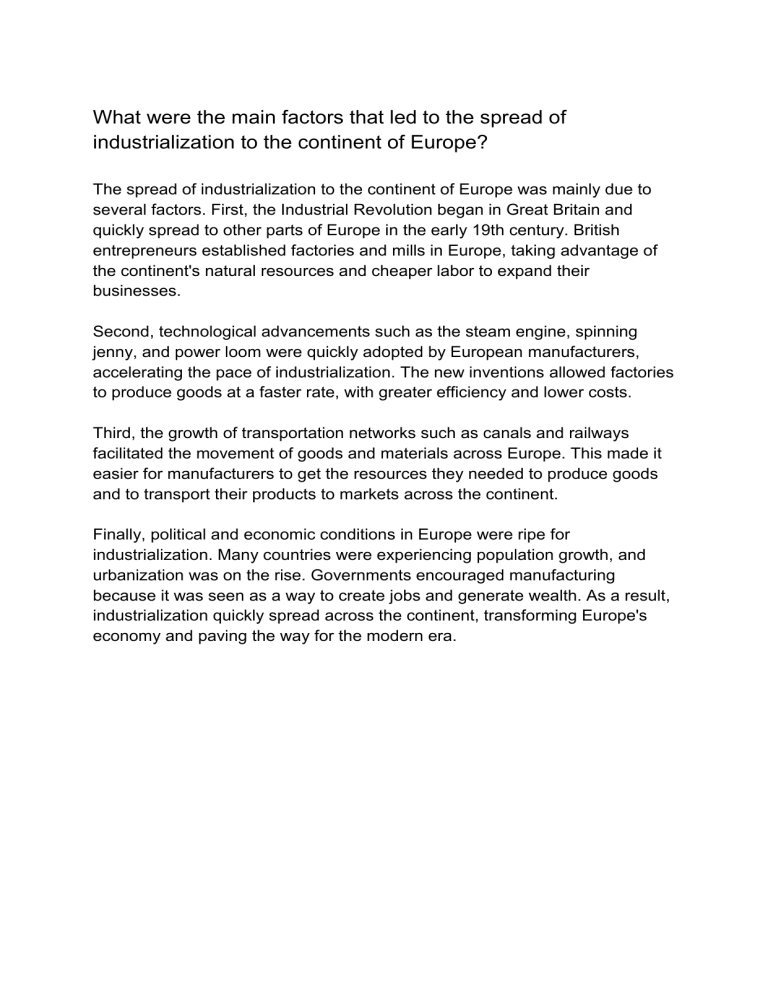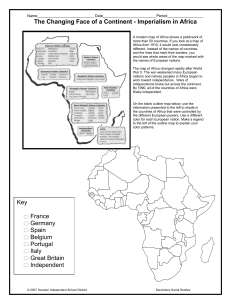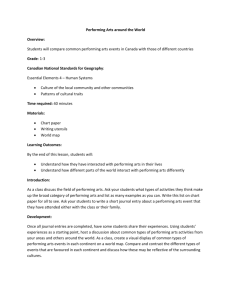What were the main factors that led to the spread of industrialization to the continent of Europe
advertisement

What were the main factors that led to the spread of industrialization to the continent of Europe? The spread of industrialization to the continent of Europe was mainly due to several factors. First, the Industrial Revolution began in Great Britain and quickly spread to other parts of Europe in the early 19th century. British entrepreneurs established factories and mills in Europe, taking advantage of the continent's natural resources and cheaper labor to expand their businesses. Second, technological advancements such as the steam engine, spinning jenny, and power loom were quickly adopted by European manufacturers, accelerating the pace of industrialization. The new inventions allowed factories to produce goods at a faster rate, with greater efficiency and lower costs. Third, the growth of transportation networks such as canals and railways facilitated the movement of goods and materials across Europe. This made it easier for manufacturers to get the resources they needed to produce goods and to transport their products to markets across the continent. Finally, political and economic conditions in Europe were ripe for industrialization. Many countries were experiencing population growth, and urbanization was on the rise. Governments encouraged manufacturing because it was seen as a way to create jobs and generate wealth. As a result, industrialization quickly spread across the continent, transforming Europe's economy and paving the way for the modern era.




